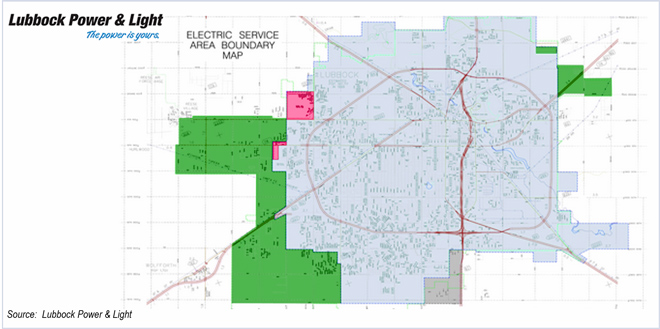By Tom Kleckner
Staff from ERCOT and SPP began discussions last week to determine how to work together on Lubbock Power & Light’s planned move to the ERCOT grid.
The grid operators conducted a staff-only call July 21 at the behest of the Public Utility Commission of Texas, which has bifurcated LP&L’s application to join ERCOT into two cases: one involving the move itself and the other involving a cost-benefit analysis of on ratepayers. (See Texas PUC Takes Slow Approach with LP&L Integration.)
PUC Chair Donna Nelson last week filed a memo describing the information the commission will be looking for from the grid operators’ studies on LP&L’s migration (Docket No. 45633).
“A joint study between ERCOT and SPP on the tangible costs and benefits could mitigate the issues that arise when studies are conducted by different parties,” Nelson wrote.
Commissioner Ken Anderson agreed with Nelson during the PUC’s July 20 open meeting, saying it is important the two entities know how they’re going to proceed.
“The question I will have for SPP and ERCOT … if they can agree on the same method to analyze not just the options of how to, but the more important one of the costs and benefits,” he said. “Then, finally, the costs that stranded ratepayers in SPP would have as a result, if any. I’m not conceding there are [some] now, but how do you think about the impact on Texas ratepayers outside of Lubbock?”
“In my mind, the key component here is so you can interpret the information, and not having a situation where you’re comparing apples to oranges,” Warren Lasher, ERCOT’s director of system planning, told Nelson. “I don’t feel at this time we have to do a joint study, but what we can do is ensure you have the information you can translate between the two studies.”
SPP’s principal regulatory analyst, Sam Loudenslager, told the PUC the RTO staffs would file a preliminary draft study scope before the commission’s next open meeting on Aug. 18.
LP&L announced last September it planned to disconnect 430 MW of its load from SPP and join ERCOT in June 2019. An ERCOT study completed in June indicated it will cost $364 million and take 141 miles of new 345-kV right of way to incorporate LP&L into ERCOT. (See “LP&L Integration Could Unlock More Panhandle Wind Energy, ERCOT Board of Directors Briefs.)
Nelson and her fellow commissioners are also concerned about other companies that may be looking to join ERCOT. Rayburn Country Electric Cooperative, an ERCOT-turned-SPP member with 85% of its load in the Texas grid, has asked the ISO to conduct an integration study as it considers rejoining.
“I’m inclined to think we deal with Lubbock as a one-off,” Anderson said. “It’s a much smaller deal for Rayburn. The question becomes the precedent” it sets.
The commissioners agreed to discuss a rulemaking for new ERCOT members at its next meeting.
“I favor initiating the production of pertinent studies now while concurrently determining whether we need a rule for a clear framework for similar requests in the future,” Nelson said in her memo.
Nelson also stressed the importance of maintaining ERCOT’s independence from federal oversight. “Of import to us all, we need to ensure that Lubbock’s move into ERCOT will not invoke federal jurisdiction over ERCOT,” she said.
In her memo, Nelson provided additional issues she felt were “specific to the matter at issue:”
- The impact to the ERCOT and SPP systems’ reliability and operational costs;
- The costs of any facilities that would be required or that could be avoided on the ERCOT and SPP systems;
- The benefits or challenges that the subject loads would provide or impose on each system;
- The impact on wholesale and retail customers, markets and market participants;
- Whether LP&L’s status as a municipal utility should be considered in the cost-benefit analysis; and
- The length of time the no-harm standard — making LP&L liable for added costs passed on to customers — should be applied to the utility for its admission to ERCOT.
Nelson said she would also like to see analysis of alternative or gradual paths for entry into ERCOT “that are prudent for us to consider” under the cost-benefit analysis.




